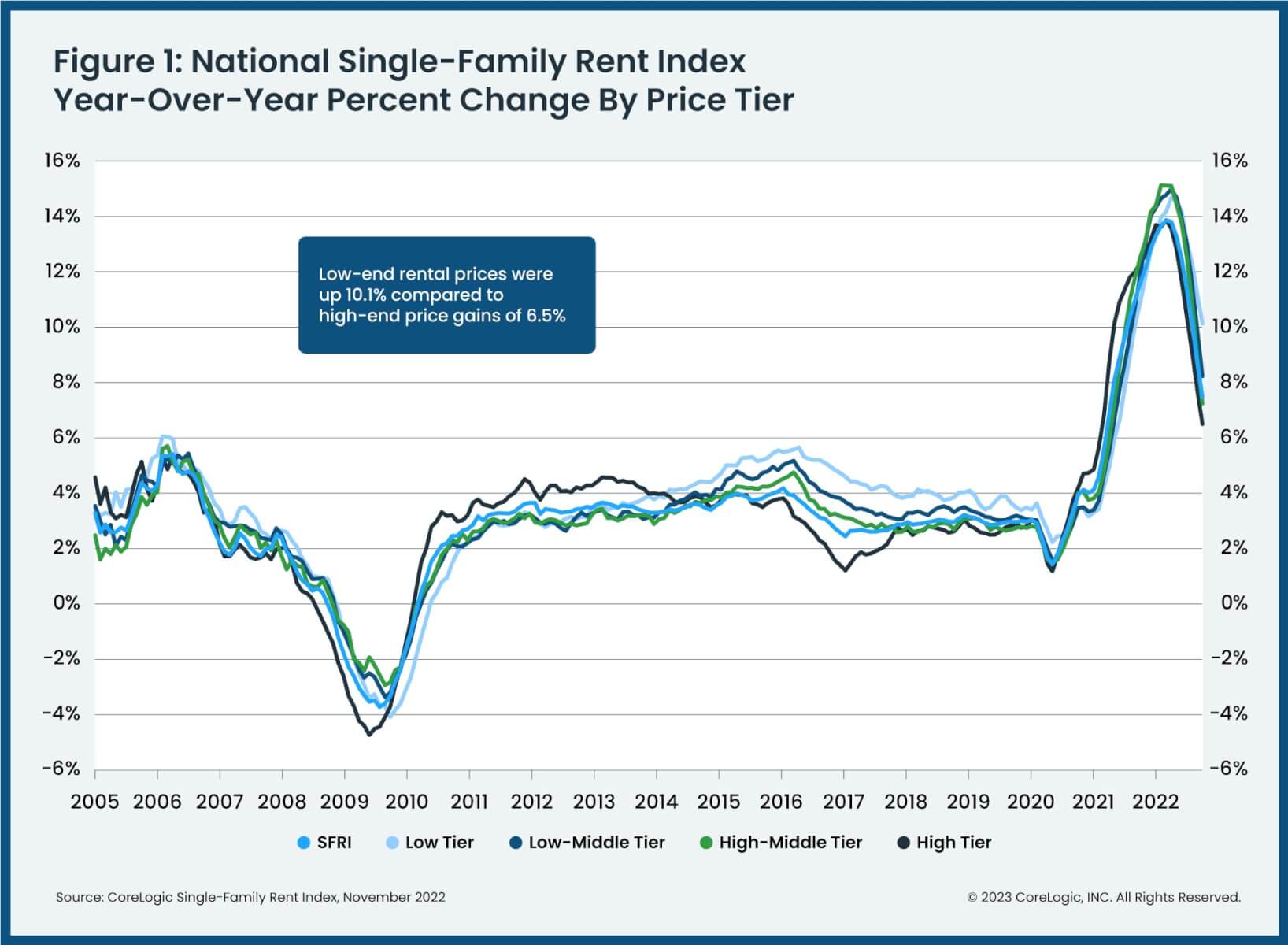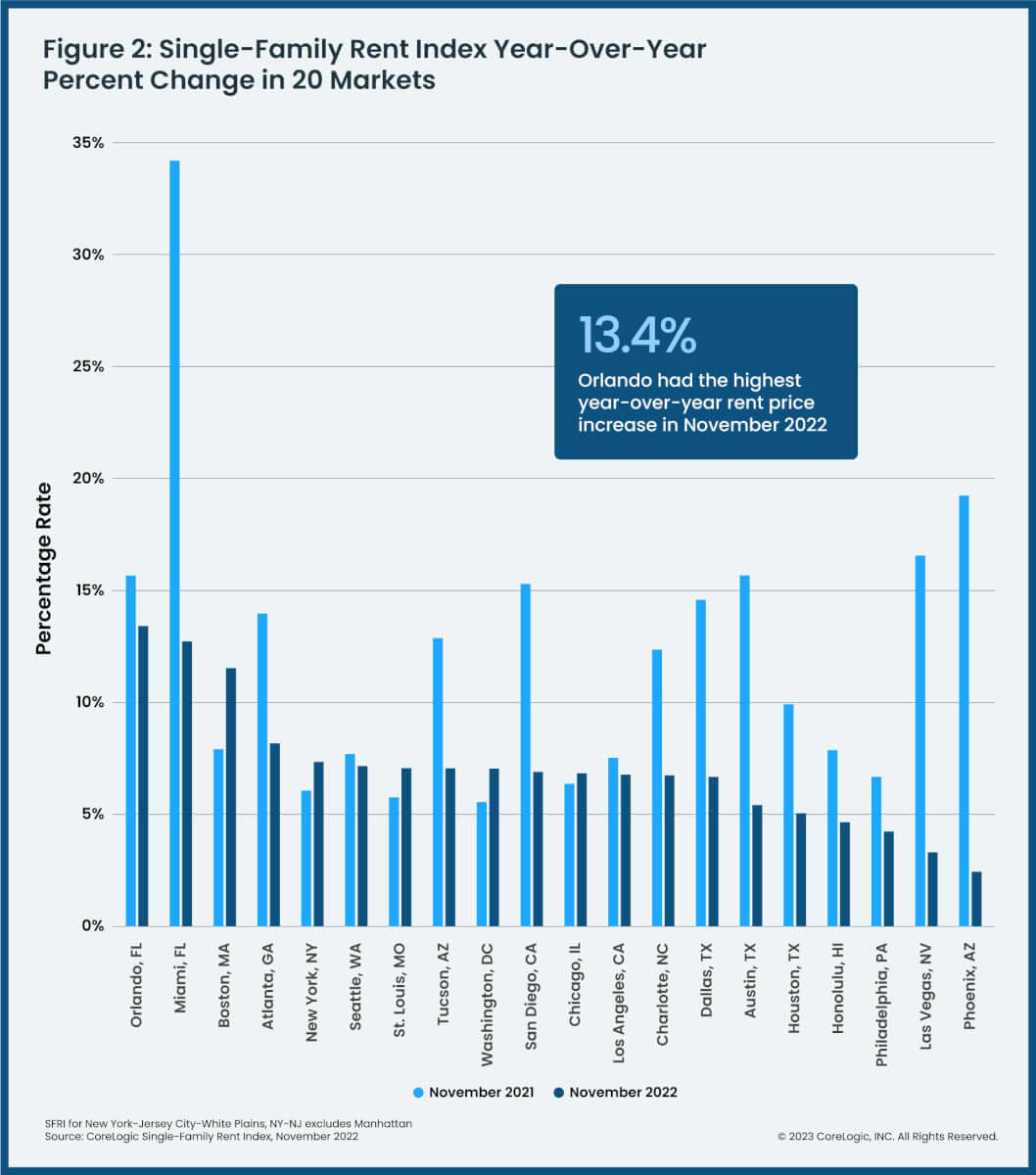CoreLogic has released its latest Single-Family Rent Index (SFRI), showing single-family rental price increases dropped to 7.5% year-over-year in November, with all four tracked price tiers posting lower gains than a year earlier.
November marked the seventh consecutive month of annual deceleration, and while Florida metro areas continued to post the nation’s highest rental cost gains, other Sun Belt cities such as Phoenix and Las Vegas that formerly showed the highest rent increases are now at the bottom of the list. CoreLogic expects that rental price growth, along with home price appreciation, will continue to level off during the first part of 2023.

“An increase in single-family rental inventory is cooling price growth rapidly,” said Molly Boesel, principal economist at CoreLogic. “November’s annual U.S. rent growth was the slowest since May 2021 and two of the previously hottest markets — Phoenix and Las Vegas — posted the lowest gains among major metro areas. Looking forward, rent growth should continue to moderate and better balance market conditions.”
To gain a detailed view of single-family rental prices, CoreLogic examines four tiers of rental prices. National single-family rent growth across the four tiers, and the year-over-year changes, were as follows:
- Lower-priced (75% or less than the regional median): 10.1%, down from 10.9% in November 2021
- Lower-middle priced (75% to 100% of the regional median): 8.2%, down from 11.9% in November 2021
- Higher-middle priced (100% to 125% of the regional median): 7.2%, down from 12.5% inNovember 2021
- Higher-priced (125% or more than the regional median): 6.5%, down from 12.3% in November 2021
Of the 20 metro areas shown in Table 1, Orlando, Florida posted the highest year-over-year increase in single-family rents in November 2022, at 13.4%. Miami recorded the second-highest gain at 12.7%, while Boston ranked third at 11.5%. Phoenix saw the lowest annual rent price gain at 2.4%.

Differences in rent growth by property type emerged after COVID-19 took hold, as renters sought standalone properties in lower-density areas. This trend drove an uptick in rent growth for detached rentals in 2021, while the gains for attached rentals were more moderate. As single-family rent prices continued growing rapidly, preferences for attached rentals began to emerge in early 2022, and by summer, they had higher increases than detached properties. Attached single-family rental prices grew 8% year over year in November compared to the 6.5% increase for detached rentals.
The next CoreLogic Single-Family Rent Index will be released on February 21, 2023, featuring data for December 2022. For ongoing housing trends and data, visit the CoreLogic Intelligence here.

 theMReport.com Your trusted source for mortgage banking news
theMReport.com Your trusted source for mortgage banking news








